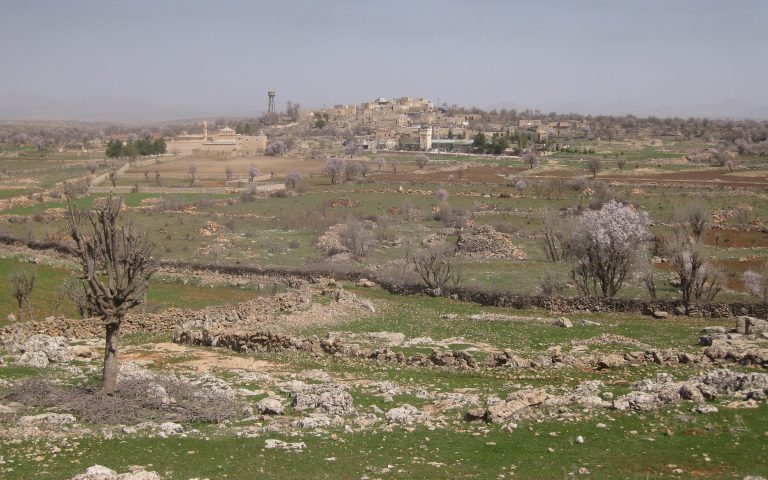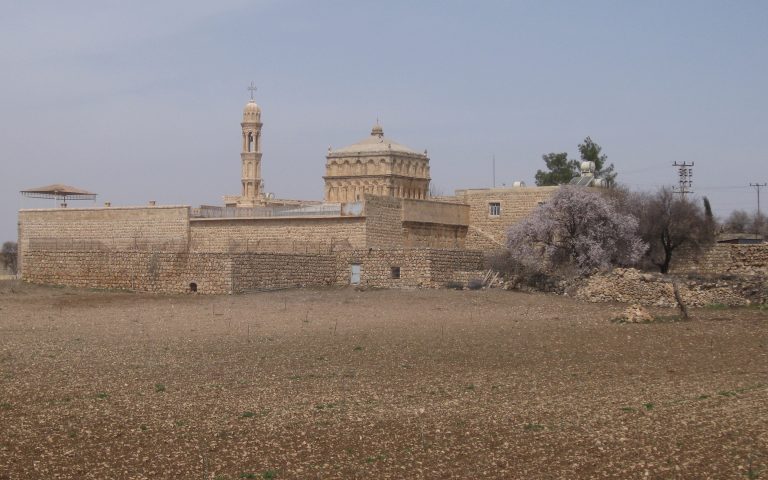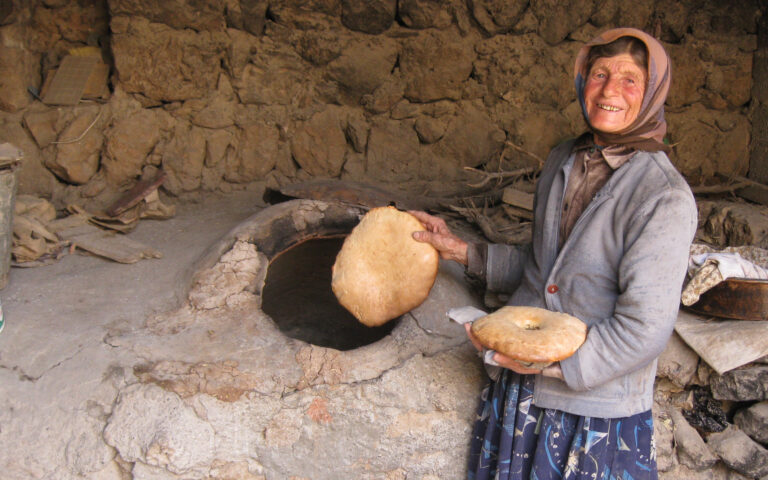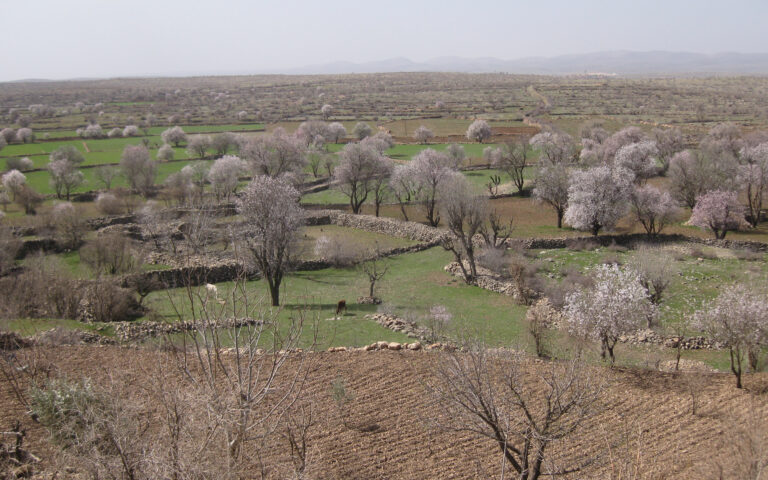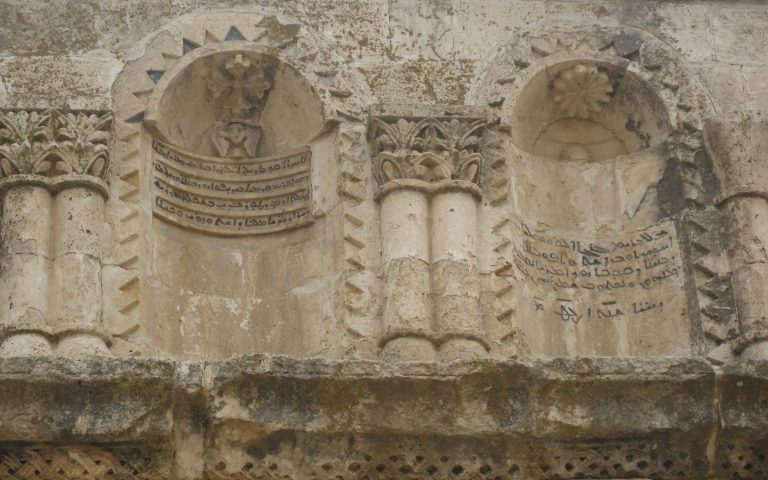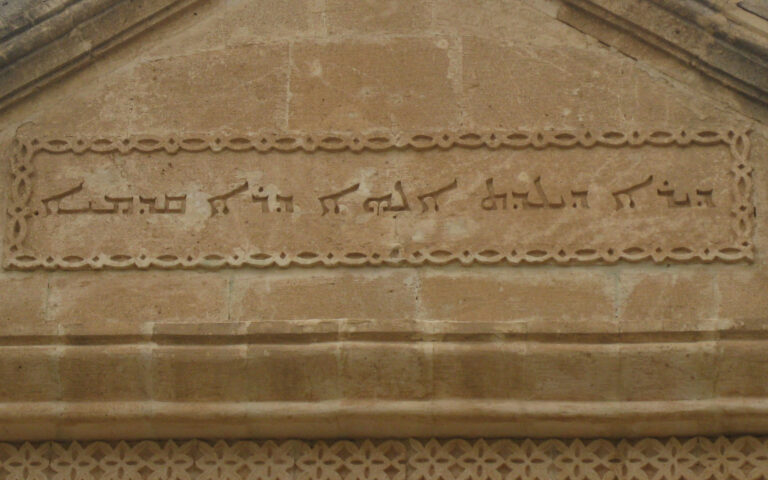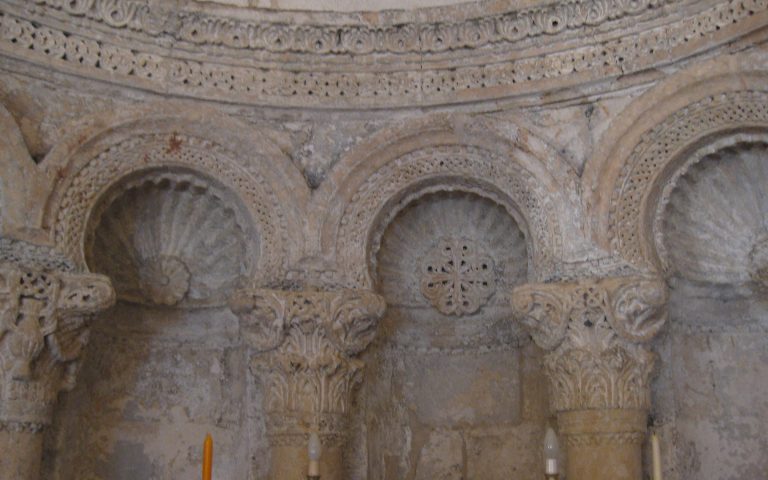The Aramaeans
The region between the two great rivers in the Middle East, the Euphrates and the Tigris, is called Mesopotamia. It is a cradle of human civilization and at the same time the home of the Arameans. The first mention of the Aramaeans, which are a Semitic people, dates back to the 14th century BC. The fact that the Aramaeans were a significant people of the Near East is made clear by the fact that their language was the common language in the first millennium BC of the Near East. In the Persian Empire, which reached its greatest extent among the Achaemenids, Aramaic was one of the official languages in the kingdom. In particular, the development of the Aramaic alphabet of letters around 900 BC meant a great civilization achievement. It formed the basis for the following Semitic writings, and retained its importance in the Near East until the seventh century. After that, Arabic was enforced.
A profound recession in the history of the Arameans brought the acceptance of Christianity. Christianity spread from Palestine through the settlements of the Arameans in Syria and Mesopotamia, to Asia Minor and from there, to Europe. The Arabs, who were then under Roman rule, were the first to accept Christianity. Religion and the Church have a very great significance for them up to this day. However, the fierce inner-church disputes in the Christian world of the time, especially in East Christian Rome and the Byzantine Empire, have led the Aramaeans to differ in the course of time from different branches of the Church, such as the Syrian Orthodox, the Syrian Catholic Church or the Syrian-Maronite Church.
Until the advent of Islam, the Arameans usually lived under the rule of the Eastern Roman and Byzantine empires. Between this and the Sassanid Empire in the east, wars often prevailed over Mesopotamia. With the spread of Islam and the withdrawal of the Byzantine Empire from the region, the Arameans came under the rule of the Caliphs. Only after the territories of today’s Syria and Lebanon were temporarily under control of the crusaders, parts of the Aramean population came under Christian rule again. This also meant that the Catholic Church tried to extend its influence among the Aramaic population. The fragmentation of the church took on a great extent among the Arameans, which had a negative effect on the unity among them.
The Aramaeans in the Ottoman Empire
After the defeat of the Crusader States, the Mamlukes, the Ottomans, and the Safavids, who ruled Egypt, fought for the supremacy over the Syrian and Upper Mesopotamian territories inhabited by the Arameans. In the 15th century, the Ottoman Empire finally defeated its rivals and ruled over the settlement area of the Arameans until the end of the First World War.
During the 400 years of Ottoman rule, the Kurds gained greater influence and power in Mesopotamia. It was above all the rural Aramaic population who suffered from it. In contrast to the Christians of the Balkans or the Armenians, the great European powers showed no interest in the Aramaeans in the Near East. In the 19th century, only Protestant and Catholic Church circles discovered the obliterated Eastern churches and tried to win over their families.
The Aramaeans in the Ottoman Empire had no great economic influence, in contrast to the other two great Christian peoples, the Greeks and the Armenians. They also did not pursue national-state ambitions. While at the beginning of the 19th century national movements were created among the Christian subjects of the Ottoman Empire and fought against the Ottoman rule, the life of the Arameans was hardly affected by this development.
The Aramaeans living in the southeastern provinces of the Ottoman Empire were not affected by the political developments in the final phase of the Ottoman Empire. Their settlement area lied where the last stage of the German-built Baghdad railway ran. First indications of oil deposits in the region captured the economic interest of the European powers.
The Turkish government used the First World War as a welcome opportunity to realize its expansionist policy with the support of Germany. At the same time, she was able to carry out the undisturbed violent turquoise of the empire. The extermination policy, initiated at the beginning of 1915, was directed primarily against the Armenians, who were accused of betraying and collaborating with the enemy. There was not even a pretext for the deportation and destruction of the Aramaic population from the eastern provinces; they were simply deported and massacred in the same way as the Armenians.
The genocide of the Arameans and the Assyrians for a long time remained a largely unknown crime. Very late, the Aramaeans began to work like the Armenians for the recognition of the genocide committed against their ancestors. An important success of their efforts was the Bundestag decision of 2 June 2016. The decision acknowledged that besides the Armenians members of the Aramaic / Assyrian and Chaldean communities were also victims of genocide in the Ottoman Empire.
The situation of the Arameans in Turkey
When Turkey was founded in 1923, only a few Aramaeans lived there. The Armenian, Greek and Jewish religious communities were given certain rights in the Treaty of Lausanne (1923), but the Syrian Orthodox Arameans were not taken into account. The few Aramaeans who had survived the genocide led a secluded life in the south-east of Turkey. They were a community forgotten by the world whose survival depended on the benevolence of the Turkish state and the Kurdish neighbors.
Many Aramaeans moved into Syria, administered by France, or into Lebanon in the years 1922-24. The Syrian Orthodox Patriarch, who had his seat in the monastery of Deir Az-Zafaran near the town of Mardin, went to Syria in 1924. The remaining Aramaic population of Turkey, which concentrated mainly in the area of Mardin and Midyat, could hold up despite many restrictions until 1980. After this, the armed conflict between the Turkish state and the Kurdish national movement led to a dramatic increase in the attacks against the Arameans. Many of them escaped to Europe in the south-east of Turkey. Currently there are only about 3,000 Aramaeans living in the region. The monasteries and churches still exist which represent an important cultural heritage of both the Aramaeans and the entire Christian world.
The Arameans during the crises of the Middle East
After the genocide of 1915 and the division of the Middle East after the First World War, most Aramaeans in Syria, under French control or in Iraq, were under British control. When Syria and Iraq gained their independence, it had no major impact on the lives of Christian minorities. They led an unremarkable life as minorities and were loyal to the rulers in power. In contrast to the policy of Ankara, the Arab-nationalist regimes tolerated the religious-cultural independence of the Christian minorities. The attitude of the Arabs toward the Arameans was historically largely unaffected. The Aramaeans had been subject to Arab-Islamic rule since the seventh century and lived with their Arab neighbors mostly in peaceful coexistence. Their relations with the Ottoman rule and the Kurds, which had been favored by the Ottoman rule, were more problematic in the settlement area of the Aramaeans.
The war against Iraq in 2003, led by a broad coalition and especially the US, led to a fundamental change in the region. And while the chaotic situation continued in Iraq, a civil war broke out in neighboring Syria in 2011. The opposition to the Assad government is composed of various Islamic extremist groups. For the Aramaeans in Syria, which were not subject to special religious and cultural restrictions under the Assad government, the outbreak of civil war was an existential threat. The European public is not aware of the dramatic consequences of the wars in Syria and Iraq for the Arabs and other Christian minorities. As a notable example is the lack of interest is that the fate of two archbishops, who were abducted by Islamists in 2013, remained almost completely unaffected. The Archbishop of the Syrian Orthodox Church, Mor Gregorius Yoanna Ibrahim, and the Archbishop of the Greek Orthodox Church of Aleppo, Boulos Yazigi, both of whom have been committed to a peaceful solution to the conflict between the opposition and the government, are probably not alive anymore.
The tragedy of the Aramaeans has been given a new dimension by the IS invasion. The Christian inhabitants of Mosul and the other territories under the control of the IS have fled to the Kurdish Autonomy, where they live under difficult conditions. The international community seems to have already resigned themselves to the endless blood shedding in the Middle East.
Exodus and Diaspora
For the Arabs and other ethnic-religious minorities living in Syria and Iraq, the flight to Europe is the only way out of their desperate situation. Some 100,000 Aramaeans live in Germany and 300,000 in the EU as a whole. These figures will surely continue to rise in the coming years, for as long as there is no peace and a secure life in Syria and Iraq, more people will leave their homeland.
The future of those who have stayed behind is uncertain. Without the help from the outside, they have no chance to survive there. The end of the last remnants of the Christian-Aramaic population in the Middle East would be a tragedy of historical proportions.
For the Aramaeans in the diaspora it is important to preserve their identity, culture and language in the long term. A nation that does not have its own state is dependent on its institutions strong enough to ensure the future of the community under the conditions of the diaspora. In particular, the different churches, which have a special responsibility, are particularly important. In history, it has exercised the functions of the missing own state and played a central role in maintaining identity.
In view of the current situation of the Aramaeans in the Middle East, it is urgently necessary to help this population group. The Arameans have made a great contribution to civilization, and especially to Christianity. For Over 3000 years, they have created a rich cultural heritage in Mesopotamia and Syria. It is the responsibility of mankind to work for the existence of this people and to preserve its cultural heritage.
The founder, Albert Sevinc, is very worried and concerned about the situation of the Arameans. His ancestors lived earlier in the village of Kaabiye near Diyarbakir and were called Hadodo (Aramaic: blacksmith). They moved 400 years ago to Midyat, which is located in the traditional Aramaic settlement area near the Syrian border. The founder feels a special responsibility for the Aramaeans in the Middle East due to his origin, his family history, as well as the challenging history the Arameans had. Consequently, in the Foundation’s activities, assistance will also be particularly important to them because they are completely ignored by the world community.
The projects of Albert Sevinc Foundation for the Arameans
One focus area of the Foundation’s activities is the support of the Aramaic population in Syria and Iraq, where a large part of the Aramaic population still lives to this day. However, their future is uncertain because of the ongoing war in the region.
The governorate al-Hasaka, located in the north-east of Syria, borders Turkey in the north and Iraq in the east. The Aramaeans call this region Gozarto, which forms one of their main settlements in Syria. The two most important localities of the region are Qamishli and al-Hasaka, where the administrative center is located. In 2003, the government had estimated 175,000 inhabitants. The Arabs and the Kurds form the largest population groups, followed by the Armenians and Yazidis. After the First World War, the descendants of the survivors of 1915/16 genocide had built a new life in Gozarto. They had many churches and their own schools. The coexistence of the various ethnic and religious population groups in the region was largely peaceful until the outbreak of war.
After the government in Damascus had largely withdrawn its forces from the region, the power vacuum was filled by the Kurdish party PYD and its military arm, the YPG. When the “Islamic State” attempted to occupy the region, they encountered the resistance of the Kurdish units and the allied self-defense forces of the Arameans. Gozarto is currently largely under ISIS control. The Syrian troops could only hold themselves in enclaves in Qamishli and al-Hasakah.
The relatively large Aramaic population of Gozartos, , has now declined to about 70,000. There are only a few thousand Armenians living there too. In the case of a victory by the IS, the Christian population would undoubtedly be completely destroyed. Meanwhile life is normalized, people are trying to rebuild their destroyed villages and the infrastructure. However, this is hampered by the ongoing blockade in Turkey that pushes back the growing influence of the Kurdish movement in North Syria.
Reconstruction is also very difficult because of the isolated situation, the ongoing war and instability in neighboring Iraq. The foundation supports social and economic development with various projects, which are implemented in cooperation with local forces. A sustainable improvement in the living conditions of the Aramaic population is expected to help them continue to live in their homeland.


